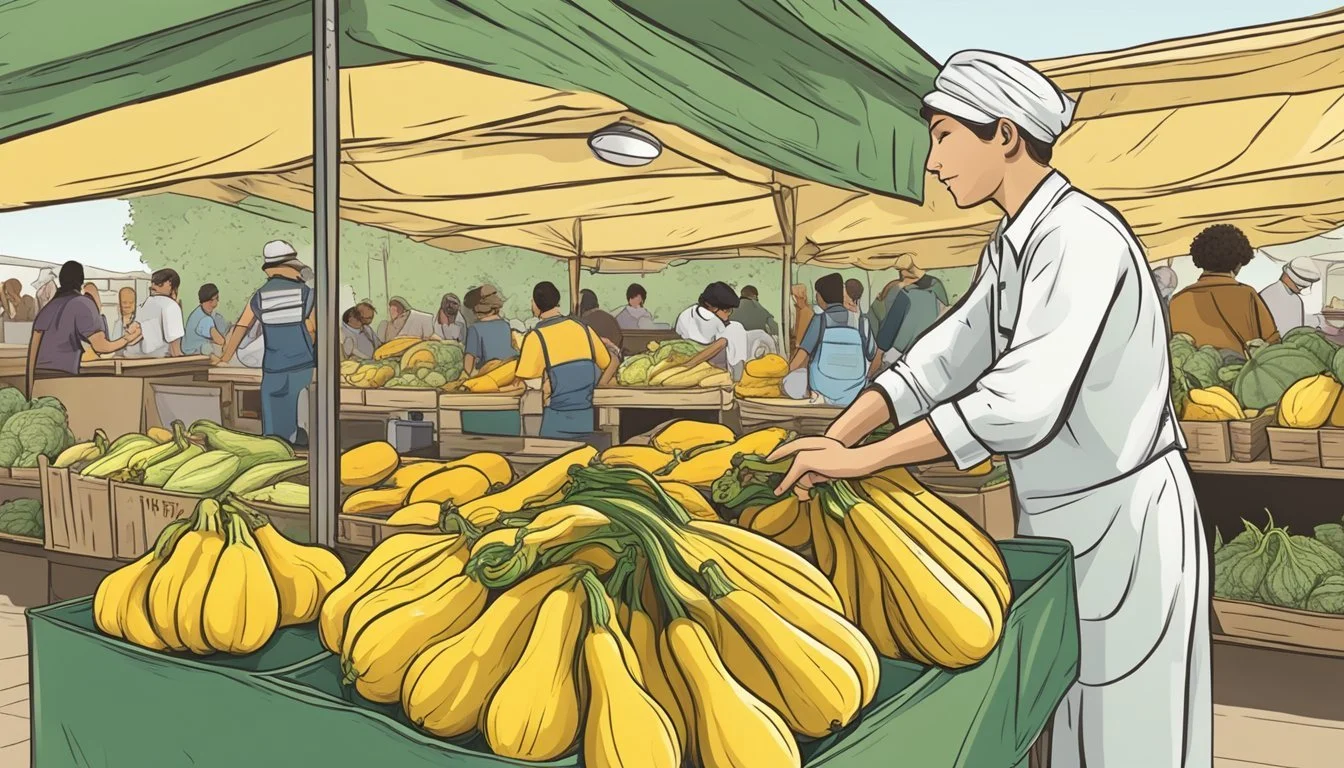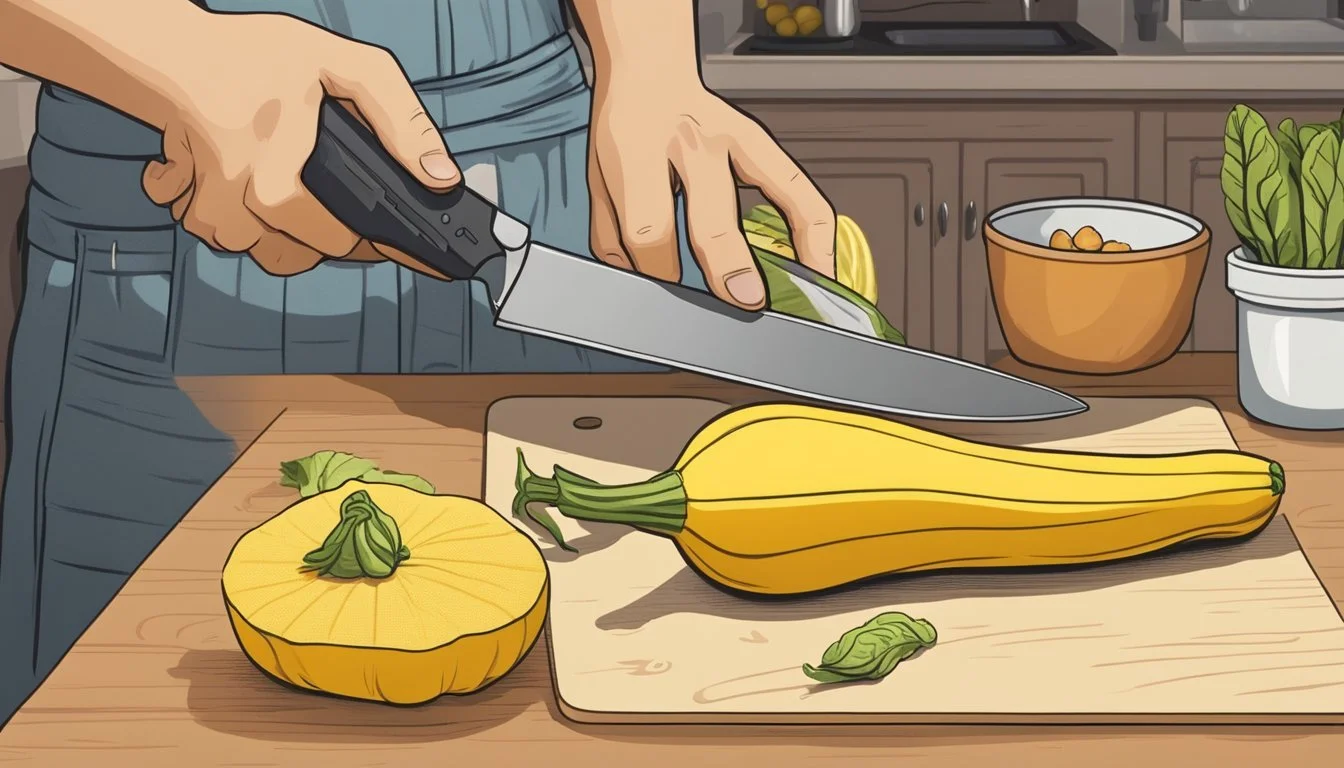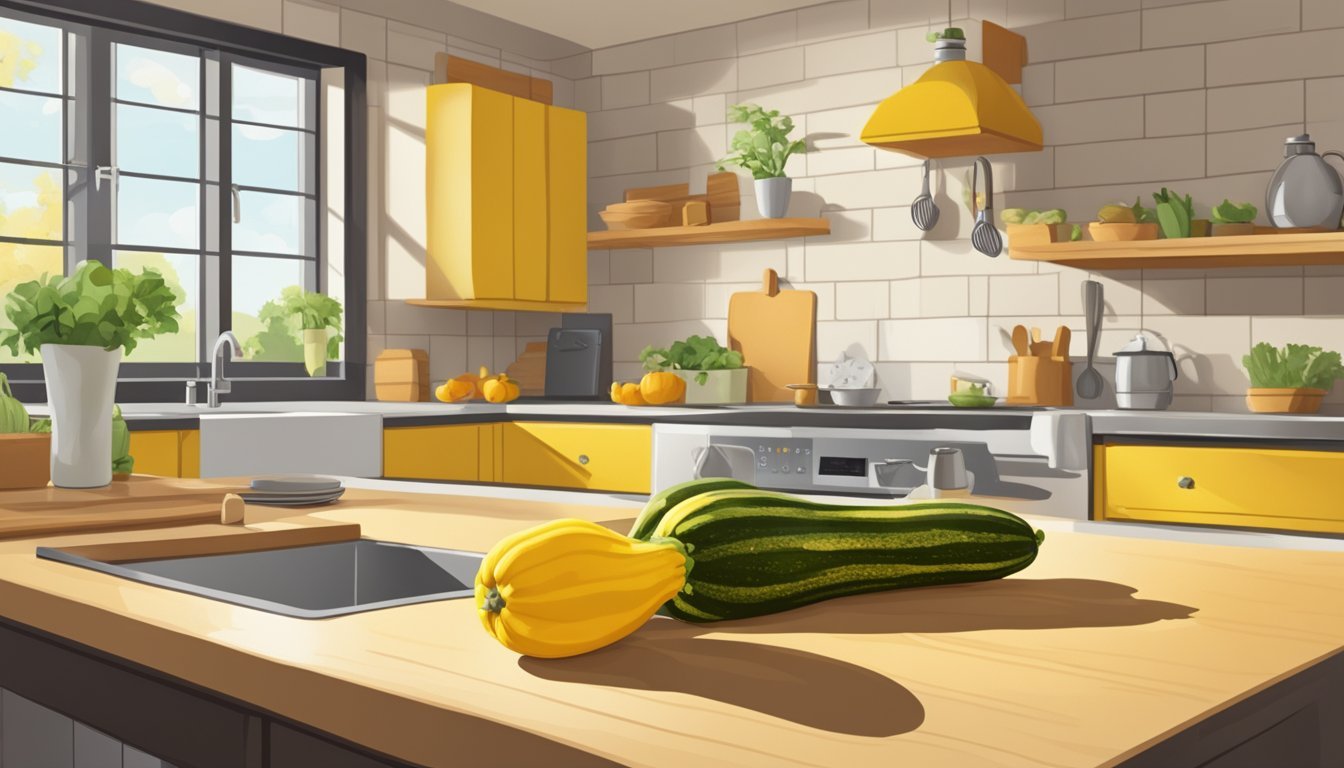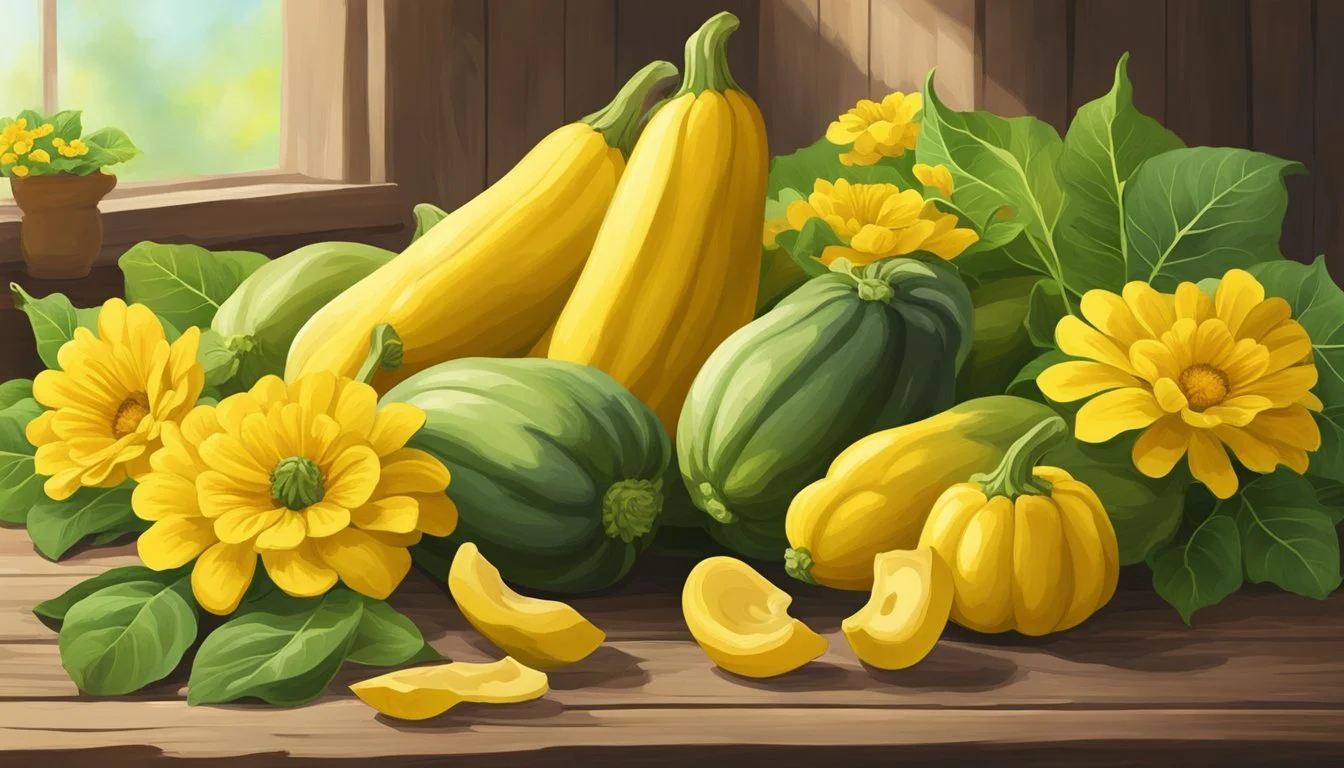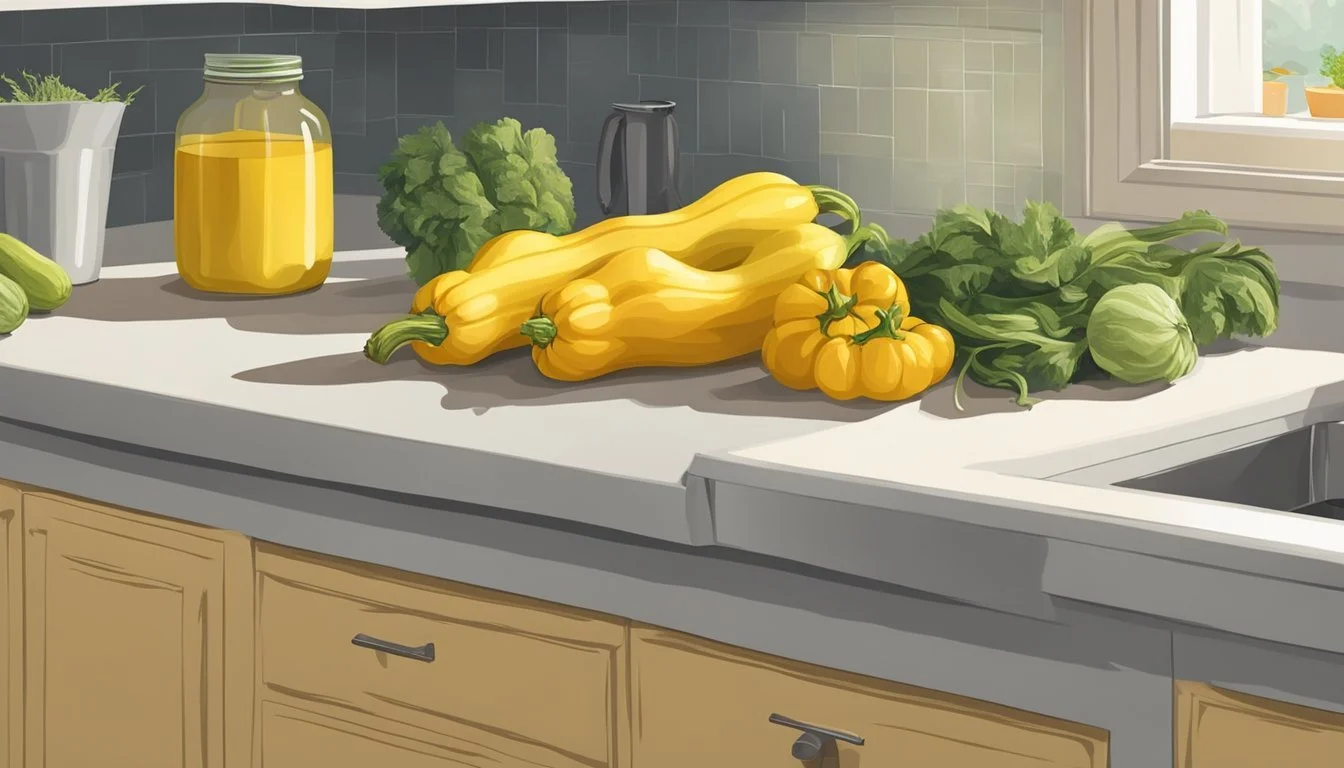How Long Does Yellow Squash Last?
Shelf Life and Storage Tips
Yellow squash, a versatile and nutritious vegetable, is commonly found in various cuisines, offering a subtle, sweet flavor and a range of health benefits. The freshness of yellow squash significantly affects its taste, texture, and nutritional content, making its shelf life an important consideration for both consumers and chefs. Typically, yellow squash remains edible and retains its quality for about four to five days when stored in the refrigerator, though this duration can vary based on factors including the vegetable's freshness at the time of purchase, and the specific storage conditions.
To extend the shelf life of yellow squash and maintain its quality, proper storage methods must be employed. It is crucial to store yellow squash in a cool, dry place, away from direct sunlight. When refrigerated, it should be kept in the crisper drawer where the temperature and humidity levels are most appropriate for vegetables. If preserved through methods such as blanching and freezing, yellow squash can last for up to 10-12 months without a significant loss in quality, offering a longer-term option for utilization.
The condition of the squash is an indicator of its edibility; signs such as a harsh skin texture or an off odor suggest spoilage, and such vegetables should not be consumed. Understanding these aspects of yellow squash's shelf life can help in minimizing waste and ensuring that the vegetable's contributions to dishes are optimal, both in taste and nutritional value.
Understanding Yellow Squash
Yellow squash, commonly known as summer squash, is a versatile vegetable that finds its place in a variety of culinary dishes. It is distinguishable by its straight neck, slightly tapered shape, and bright yellow skin. Unlike winter squashes like butternut or acorn squash that are harvested when mature and have harder skins, yellow squash is harvested while still immature, hence its tender, edible skin.
Typically Characteristics of Yellow Squash:
Color: Bright yellow
Shape: Straight neck to slightly tapered
Skin: Tender, edible
In contrast to yellow squash, zucchini is another type of summer squash that is generally green in color and has a similar shape and texture. Both vegetables can be used interchangeably in recipes due to their mild flavor. Pattypan squash, with its distinctive shape likened to a small flying saucer, is also a summer squash variety.
Nutritional Profile: Yellow squash is low in calories and provides vitamin C, vitamin A, magnesium, and potassium. It is also known for its high water content.
Nutrient Value (per 100g) Calories 16 Water 95g Vitamin C 17.2mg Vitamin A 100IU Potassium 262mg Magnesium 18mg
Culinary Uses: It can be eaten raw or cooked, and it's a common addition to salads, stir-fries, and casseroles. This vegetable can also be grilled, steamed, or baked, making it a favored choice for healthy and creative dishes.
Selection and Purchase Tips
When purchasing yellow squash, buyers should focus on freshness and variety selection to ensure they get the best quality and nutritional value. The key is to look for signs of freshness like a firm texture and vibrant color, and to be aware of the nutritional benefits such as vitamins A and C, and potassium found in yellow squash.
Inspecting for Freshness
Selecting fresh yellow squash requires close inspection. Look for a firm texture as this indicates the squash was recently harvested. The skin should be free of blemishes and have a bright, consistent color. Heavier squash for its size often contains less moisture loss, suggesting a fresher product. A fresh yellow squash not only promises better flavor but also retains its nutritional value, including significant amounts of vitamin A and vitamin C, as well as potassium.
Selecting Varieties
Different varieties of yellow squash may offer subtle differences in flavor and texture. When selecting a variety, consider how you plan to use the squash in recipes, as some may be better suited for grilling, stuffing, or slicing raw into salads. Regardless of variety, the principles of selecting for freshness apply across all types: look for firmness, a vibrant color indicative of rich vitamins and nutrients, and absence of blemishes or soft spots.
Storing Yellow Squash at Home
Proper storage can significantly extend the shelf life of yellow squash. Here are practical methods to ensure freshness and longevity of squash in home storage.
Refrigeration Tips
Storing yellow squash in the refrigerator can keep it fresh for up to four days. It is important to:
Rinse the squash under cool water to remove any dirt.
Dry the squash thoroughly to reduce excess moisture, which can hasten spoilage.
Place the squash in a sealable plastic bag or perforated bag to promote good air circulation.
Use labels and markers to date the items, allowing one to track the storage time efficiently.
Freezing Procedures
To freeze yellow squash and extend its shelf life for up to 10-12 months:
Cut the squash into slices or dices.
Blanch in boiling water for a short period, and then plunge into an ice bath.
Dry the pieces before arranging them on a tray with space between each slice.
Place the tray in the freezer until the pieces are firm.
Transfer the frozen squash into a sealable plastic bag or airtight container, label with the date, and return to the freezer.
Get the best value for your money by purchasing airtight containers online!
Alternative Storage Methods
One can also preserve yellow squash through drying:
Cut the squash into uniform pieces and dehydrate them in an oven with the door slightly open to maintain air circulation.
Once dried and brittle, place squash in an airtight container or plastic bag, sealing it to keep moisture out.
Optimal Storage Conditions
When storing yellow squash, maintaining proper conditions is crucial for preservation. Refrigeration is the recommended method for keeping the squash fresh. The ideal temperature to store yellow squash is within the range of 40°F to 50°F (4°C to 10°C).
Room temperature storage is only suitable for a brief period, making it essential to transfer the squash to a fridge soon after purchase. Yellow squash should be kept in a moisture-controlled environment, as excessive dampness can lead to rot, mold, or mild spoilage.
Key points for optimal storage conditions include:
Refrigerate at 40°F to 50°F (4°C to 10°C)
Maintain low moisture levels
Avoid direct sunlight that may induce decay
Ensure good air circulation around the squash
For best results, one should:
Place the squash in a perforated plastic bag to promote air circulation.
Keep it in the crisper drawer of the refrigerator to avoid excess moisture contact.
Place it away from ripening fruits to prevent over-ripening due to ethylene gas.
By adhering to these conditions, one extends the shelf life of yellow squash, ensuring it remains a fresh and vibrant addition to meals.
Shelf Life Expectancy
Yellow squash, a popular type of summer squash, has a limited shelf life that can be maximized with proper storage techniques. Raw yellow squash is best kept in the refrigerator, where it typically remains fresh for 4 to 7 days. Place it in the crisper drawer to maintain optimal humidity levels, which helps extend its freshness.
When storing cooked yellow squash, one must ensure it is in a shallow airtight container or wrapped tightly in aluminum foil or plastic wrap to prevent moisture loss and contamination. Cooked squash should be consumed within 2 to 3 days when kept refrigerated.
For extended storage, freezing is a viable option. Raw yellow squash should be sliced or diced and blanched—boiled for a short period and then plunged into an ice bath to halt the cooking process—before freezing. This method helps preserve texture and flavor.
State Refrigerator Freezer Raw 4-7 days Not recommended Cooked 2-3 days Up to 10-12 months* Blanched Not applicable Up to 10-12 months
*Properly sealed and packaged
It is crucial to inspect yellow squash for signs of spoilage, such as a harsh skin texture or an off odor, before preparation and consumption. Proper food handling and storage practices ensure the safety and quality of yellow squash, allowing one to enjoy this versatile vegetable in various dishes.
Signs of Spoilage
When assessing the condition of yellow squash, observing its physical appearance and scent gives a clear indication of its freshness.
Color and Texture Changes
Yellow squash initiates with a vibrant, bright yellow hue and a firm, smooth texture. As it begins to spoil, notable changes occur:
Color: It may become dull or start developing darker spots.
Texture: Initially firm, it turns squishy or overly tender, indicating spoilage.
Mold and Odors
The emergence of mold and the presence of odors serve as clear signs that yellow squash is no longer suitable for consumption:
Mold: Visible mold, whether white, green, or black fuzzy spots, signifies bacterial or fungal growth.
Odors: A fresh squash has a mild, earthy scent. A rotten smell signifies spoilage.
Preparation and Usage Suggestions
Before diving into cooking techniques and exploring recipe applications, one must understand how to properly prepare yellow squash. It involves washing, trimming the ends, and for some recipes, removing the seeds to ensure the best taste and texture. The squash can be cut into slices or chunks depending on its use in a dish.
Cooking Techniques
Yellow squash is versatile and can be prepared using a variety of cooking methods. To retain the flavor and nutrients, it's important to not overcook it. Here are some common techniques:
Baking: Toss slices with olive oil, salt, and pepper, and bake at 375°F until tender.
Sautéing: Cut the squash into slices or cubes and sauté in butter or olive oil over medium heat.
Blanching: Submerge slices in boiling water for 1-2 minutes, then transfer to ice water to stop the cooking process.
To maximize both flavor and hydration, consider the weight of the squash and adjust cooking times accordingly. Larger pieces may require longer cooking times.
Recipe Applications
Yellow squash is a highly nutritious vegetable that can enhance a multitude of dishes:
Salads: Add raw, ribboned, or diced squash to salads for a crisp texture.
Soups: Blend cooked squash into soups for a smooth, creamy consistency.
Stir-Fries: Include squash in stir-fries, cook briefly to keep the squash firm and flavorful.
When preparing yellow squash for different recipes, keep in mind that the squash's mild taste pairs well with a variety of flavors, from savory herbs to sweet spices.
Health Benefits and Nutrition
Yellow squash is a nutritious vegetable that offers a range of health benefits due to its rich vitamin and mineral content. This vegetable is notable for its vitamin A and vitamin C levels, both of which are essential for maintaining good health.
Vitamin A is recognized for its role in maintaining healthy vision, skin, and immune function. As a source of beta-carotene, which the body converts into vitamin A, yellow squash contributes to these vital biological processes.
Vitamin C, found in yellow squash, is crucial for the synthesis of collagen, supporting the structure of blood vessels, bones, and skin. It's also an antioxidant that helps protect the body against free radicals, potentially reducing the risk of certain health complications.
In addition to these vitamins, yellow squash is a good source of potassium, a mineral that is necessary for maintaining normal blood pressure and heart function. It also contains magnesium and folate, which play a role in numerous biochemical reactions within the body.
Here is a summarizing table of the primary nutrients found in yellow squash and their benefits:
Nutrient Benefit Vitamin A Supports vision, skin health, and immune function. Vitamin C Aids in collagen formation; possesses antioxidant properties. Potassium Essential for heart and muscle function, regulates blood pressure. Magnesium Important for muscle and nerve function, and bone health. Folate Contributes to cell growth and DNA formation.
Incorporating yellow squash into one's diet can contribute to overall nutritional value and support the maintenance of one's health.
Extending Shelf Life Through Preservation
Preserving yellow squash through methods like canning and pickling can significantly extend its shelf life beyond the typical refrigerator period. These techniques allow for long-term storage while maintaining the vegetable's flavor and nutritional value.
Canning Yellow Squash
Canning involves placing yellow squash in airtight containers and heating them to destroy microorganisms and enzymes that spoil food. To can yellow squash, it should first be washed, cut into cubes, and then boiled in a water, vinegar, and salt solution. After boiling for five minutes, the squash is placed in sterilized jars and covered with the hot liquid, ensuring all air bubbles are removed before sealing the jars. Properly canned yellow squash can last for over a year when stored in a cool, dark place.
When it comes to jars, online shopping is the way to go!
Pickling Possibilities
Pickling is another preservation method that combines vinegar, water, and salt to create an acidic environment in which bacteria cannot thrive. To pickle yellow squash, it's essential to cut the squash into the desired shape, mix it with pickling spices, and then submerge it in the pickling brine. The containers should then be sealed tightly and stored in refrigeration. Pickled yellow squash typically has a shelf life that ranges from several months to a year, depending on the specific method and storage conditions used.
Troubleshooting Common Squash Issues
Gardening enthusiasts often encounter challenges when growing yellow squash. A strong understanding of pest management and pollination processes is critical for a successful harvest.
Dealing With Pests
Yellow squash plants (they) are susceptible to a range of insects that can significantly impair plant health and fruit production. One common pest is the squash bug (Anasa tristis), which saps nutrients from the plant, leading to stippling—small, pale spots on the leaves. Insect Management Tips:
Early Detection: Regularly inspect plants for golden, oval-shaped eggs usually clustered on the undersides of leaves.
Physical Removal: If infestations are light, remove squash bugs by hand.
Cultural Practices: Clear debris and plant refuse to minimize habitats for squash bugs.
Barriers: Utilize floating row covers to protect plants, particularly during the egg-laying period.
Fruit Not Setting
Successful fruit set in yellow squash plants (they) can be undermined by improper care and unfavorable environmental conditions. Squash plants require:
Adequate Sunlight: A minimum of six hours of direct sun per day for optimal growth and fruit development.
Optimal Pollination: For fruit to set, pollen must be effectively transferred from the male to the female flowers. Weather conditions, including excessive warmth or dampness, may disrupt this process by affecting pollen vitality.
Fruit Setting Tips:
Pollinator Attraction: Encourage bees and other pollinators by planting diverse flowering species nearby.
Moisture Management: Adequate, but not excessive watering is critical to prevent rotting and fermenting of the blossoms that can lead to fruit drop.
Temperature Regulation: To avoid pollen grains from becoming unviable, provide some shade during the peak heat to help regulate temperature.
Practical Kitchen Tips
When it comes to yellow squash, proper handling, and cleaning are vital for both safety and longevity. These methods not only enhance the shelf life of the squash but also ensure that it remains safe and delicious for consumption.
Handling and Safety
To manage and maintain yellow squash, one should always keep food safety at the forefront. This means washing the hands thoroughly before and after handling the squash. When dealing with cut squash, it should be stored at a cool temperature between 45°F-50°F (7°C-10°C) to prevent bacterial growth. For uncut squash, a pantry or kitchen storage area that's cool and well-ventilated will suffice for short-term storage. One must always check for signs of spoilage which include soft spots, an unpleasant odor, or visible mold. If any of these signs appear, they should dispose of the squash to prevent the risk of foodborne illness.
Proper Cleaning Methods
Before preparation, washing the yellow squash is a critical step. They should be rinsed under clean, running water to remove any dirt or bacteria that could be present on the surface. A produce brush can be used to gently scrub the skin, especially if squash will be consumed with the peel on. After rinsing, one should dry the squash thoroughly with a clean cloth or paper towel to prevent excess moisture, which could lead to quicker spoilage. Additionally, all cutting boards and utensils should be washed both before and after they come into contact with the squash to avert cross-contamination.
By implementing these practical kitchen tips, enthusiasts can help ensure their yellow squash stays fresh and safe to eat from the time of purchase to preparation.
Seasonal Considerations for Yellow Squash
When it comes to yellow squash, the seasons drastically affect its quality and shelf life. Proper care during peak harvest time in summer, and appropriate storage in winter, ensures maximum freshness and longevity.
Summer Harvest
During summer, yellow squash thrives, having the longest freshness span when harvested in its peak season. They should be picked when they are immature — typically when they are six to eight inches long and the rind is easily pierced with a fingernail. The copious sunlight and warm weather are conducive to a quick and healthy growth, but it's crucial to harvest them before they become too large and overripe, which diminishes their taste and storage potential. After the harvest, yellow squash should be cured under the sun for no more than two days to toughen their skins, making them less prone to bruising and extending their shelf life.
Winter Care
In the colder months, the storage of yellow squash requires different considerations. Ideally, they are kept in a cool, dry place between 45°F to 50°F to prevent them from deteriorating. If temperatures fall below this range, yellow squash can become damaged by the cold. Although not common, if yellow squash is grown in a controlled environment in winter in the United States, they would still need ample sunlight or suitable artificial lighting to mimic summer conditions. Otherwise, the lack of adequate sunshine can lead to reduced taste and nutritional content.
Concluding Remarks
Yellow squash is a nutritious and versatile vegetable, yet its shelf life is relatively short compared to some other produce. Typically, it remains in prime condition for 3 to 4 days at room temperature. To extend its freshness, one should store yellow squash in the refrigerator.
Upon purchase, the optimal state of the vegetable is indicated by its:
Firmness: Squash should be firm to the touch.
Skin texture: Its skin should be smooth or slightly rough but not harshly textured.
Color: A vibrant, bright yellow hue signifies ripeness.
Once refrigerated, signs of deterioration might appear after a week, including:
Scarring
Bruising
Wrinkling
Consumers are advised to monitor these signs closely to determine the vegetable's edibility. For prolonged storage, yellow squash can be dried and sealed in an airtight container.
It's crucial to remember that quality and longevity can be influenced by factors such as temperature, moisture levels, and overall handling before purchase. Proper hygiene and preparation practices can also contribute to maximizing the squash's shelf life and ensuring safety upon consumption.


